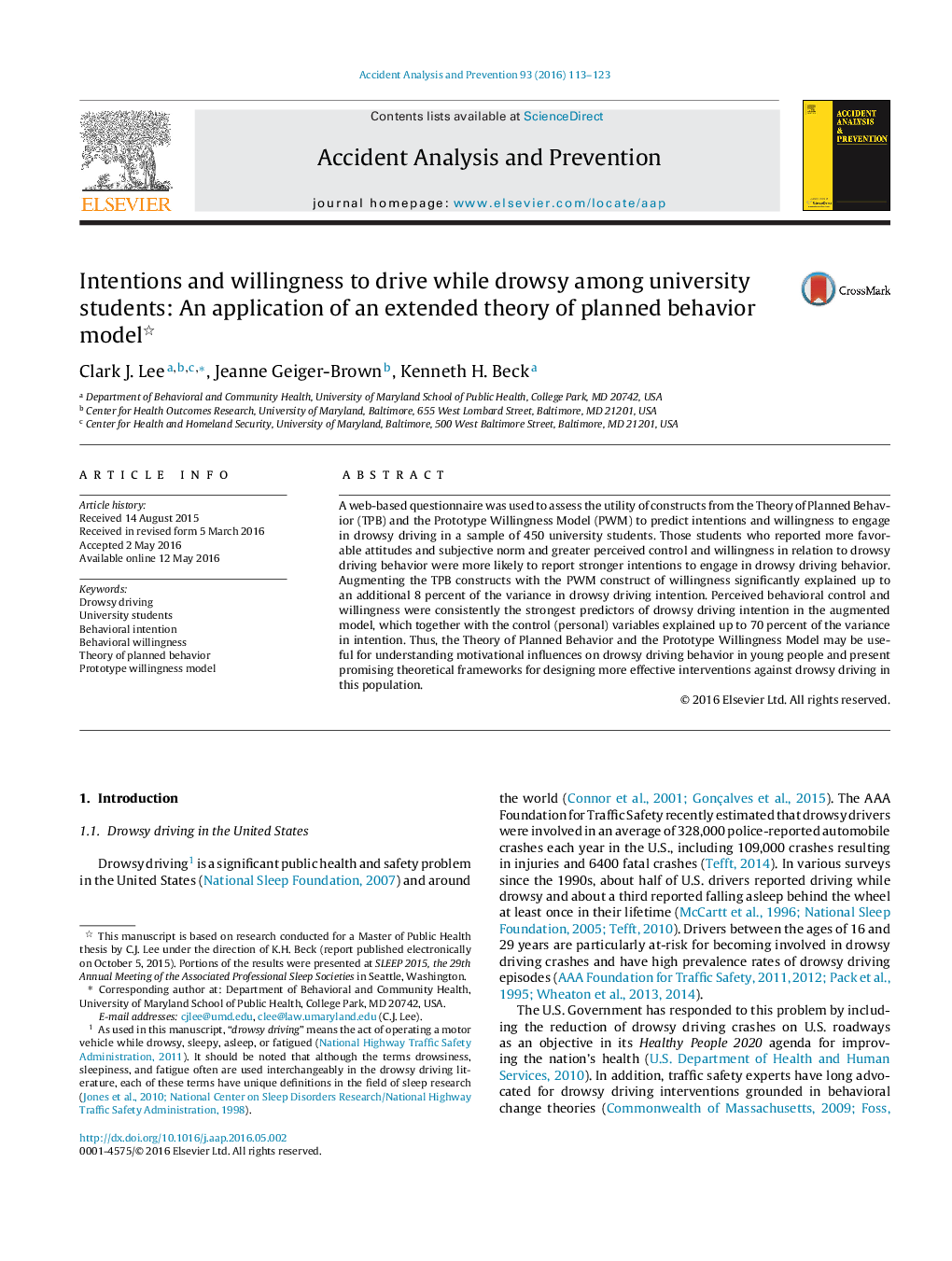| Article ID | Journal | Published Year | Pages | File Type |
|---|---|---|---|---|
| 571951 | Accident Analysis & Prevention | 2016 | 11 Pages |
Abstract
A web-based questionnaire was used to assess the utility of constructs from the Theory of Planned Behavior (TPB) and the Prototype Willingness Model (PWM) to predict intentions and willingness to engage in drowsy driving in a sample of 450 university students. Those students who reported more favorable attitudes and subjective norm and greater perceived control and willingness in relation to drowsy driving behavior were more likely to report stronger intentions to engage in drowsy driving behavior. Augmenting the TPB constructs with the PWM construct of willingness significantly explained up to an additional 8 percent of the variance in drowsy driving intention. Perceived behavioral control and willingness were consistently the strongest predictors of drowsy driving intention in the augmented model, which together with the control (personal) variables explained up to 70 percent of the variance in intention. Thus, the Theory of Planned Behavior and the Prototype Willingness Model may be useful for understanding motivational influences on drowsy driving behavior in young people and present promising theoretical frameworks for designing more effective interventions against drowsy driving in this population.
Keywords
Related Topics
Physical Sciences and Engineering
Chemical Engineering
Chemical Health and Safety
Authors
Clark J. Lee, Jeanne Geiger-Brown, Kenneth H. Beck,
